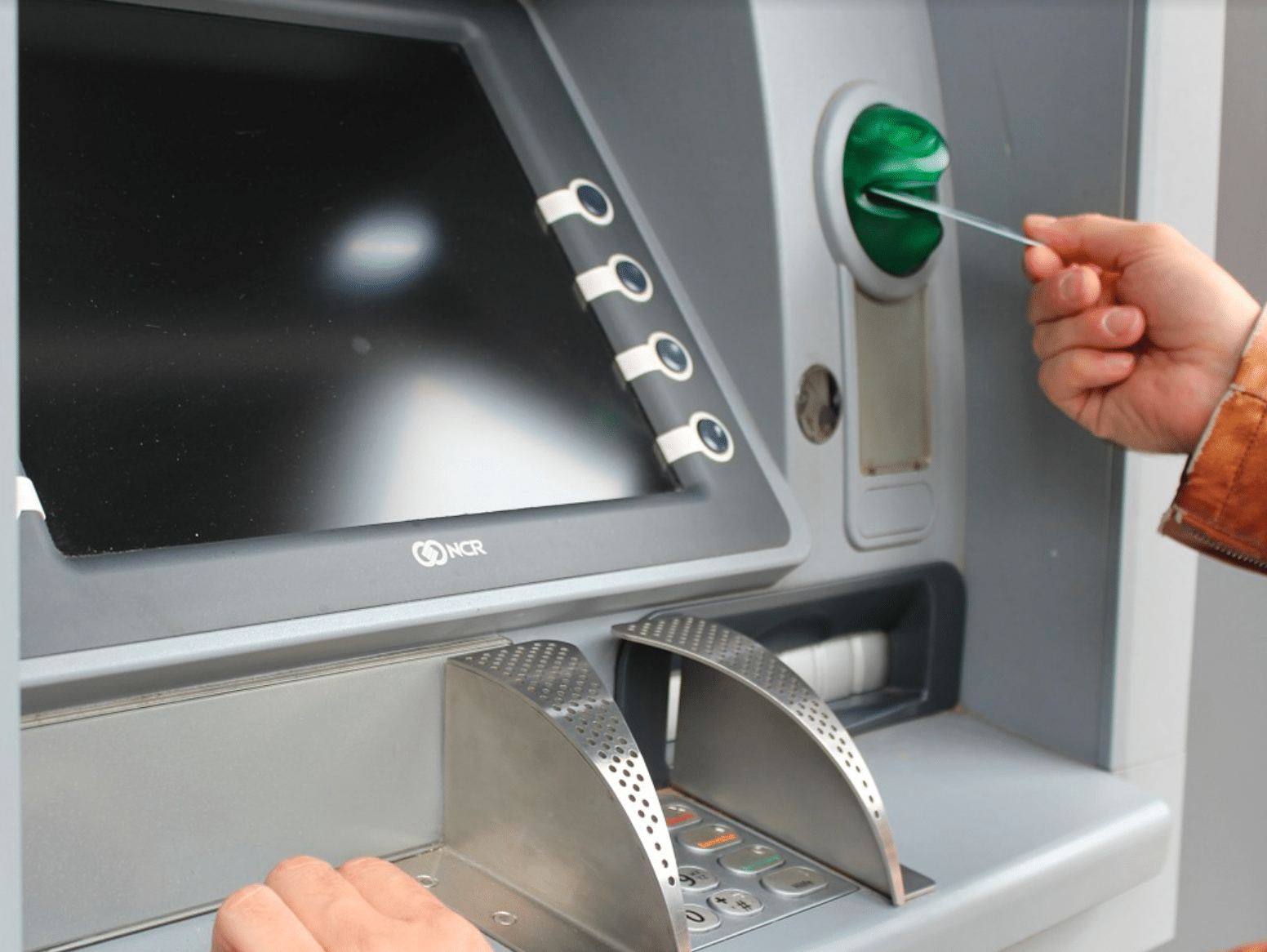In today's fast-paced world, the role of ATMs in our daily lives cannot be overstated. The convenience of withdrawing cash at any time has made ATMs an essential part of modern banking. But have you ever wondered how is 10 ATM managed, maintained, and secured to ensure smooth transactions? This article delves deep into the workings of ATMs, focusing on the significance of having 10 ATMs in a network and the factors that make them reliable.
ATMs, or Automated Teller Machines, have revolutionized the banking industry by offering customers unparalleled convenience. Understanding how these machines function and the infrastructure behind them is crucial for both consumers and businesses. In this article, we will explore the importance of maintaining a network of 10 ATMs and how it impacts the banking experience.
Whether you're interested in learning about the technology behind ATMs or the strategic placement of 10 ATMs in a specific area, this article provides valuable insights. We will also discuss the security measures and operational efficiency that make ATMs a vital component of modern banking systems.
- Exploring The World Of Hubb4u Your Ultimate Guide To Building Strong Relationships
- Unveiling Movierulz 3 Page Your Ultimate Guide To Movie Streaming
Table of Contents
- What is an ATM?
- The Importance of 10 ATMs in a Network
- How ATMs Work
- Benefits of ATMs
- Security Measures for ATMs
- Maintenance and Support for ATMs
- The Future of ATMs
- Strategic Placement of ATMs
- Cost Considerations for 10 ATMs
- Conclusion
What is an ATM?
An ATM, or Automated Teller Machine, is a self-service machine that allows users to perform banking transactions without the need for a human teller. These machines are equipped with advanced technology to facilitate cash withdrawals, deposits, balance inquiries, and more. The presence of ATMs has significantly reduced the need for physical bank branches, making banking services more accessible to people worldwide.
Key Features of ATMs
- Cash Withdrawals: Users can withdraw cash from their accounts at any time.
- Deposits: Many ATMs allow users to deposit cash or checks directly into their accounts.
- Balance Inquiries: Customers can check their account balances instantly.
- Mini Statements: Some ATMs provide users with a summary of recent transactions.
The Importance of 10 ATMs in a Network
Having a network of 10 ATMs strategically placed in a specific area offers numerous advantages. It ensures that customers have easy access to banking services, reduces congestion at individual machines, and enhances customer satisfaction. Additionally, a network of 10 ATMs can help banks expand their reach and improve their market presence.
- Comprehensive Guide To Inurlpost Track Everything You Need To Know
- Hd4u The Ultimate Guide To Highdefinition Entertainment And Technology
Advantages of 10 ATMs
- Increased Accessibility: More ATMs mean more convenience for customers.
- Reduced Waiting Times: With multiple machines available, customers spend less time waiting in line.
- Improved Customer Experience: A well-maintained network of ATMs enhances the overall banking experience.
How ATMs Work
ATMs function through a combination of hardware and software components. When a user inserts their card, the ATM communicates with the bank's central server to verify the account details and authorize transactions. The machine then dispenses cash or performs other requested actions based on the user's input. Understanding the inner workings of ATMs helps users appreciate the technology behind these machines.
Components of an ATM
- Card Reader: Reads the magnetic strip or chip on the user's card.
- Keypad: Allows users to enter PINs and other transaction details.
- Display Screen: Provides visual instructions and feedback to the user.
- Cash Dispenser: Delivers the requested amount of cash to the user.
Benefits of ATMs
ATMs offer a wide range of benefits to both consumers and financial institutions. For customers, ATMs provide 24/7 access to banking services, eliminating the need to visit a physical branch. Banks, on the other hand, benefit from reduced operational costs and improved customer satisfaction. The presence of 10 ATMs in a network amplifies these advantages, making banking more efficient and accessible.
Consumer Benefits
- Convenience: ATMs are available around the clock, allowing users to perform transactions whenever needed.
- Security: Modern ATMs incorporate advanced security features to protect user data and prevent fraud.
- Speed: Transactions are completed quickly, saving users valuable time.
Security Measures for ATMs
Security is a top priority for ATM operators. To ensure the safety of user data and prevent unauthorized access, ATMs are equipped with various security measures. These include encryption protocols, biometric authentication, and surveillance cameras. Additionally, regular software updates and maintenance help keep ATMs secure and functioning optimally.
Types of Security Measures
- Data Encryption: Protects sensitive information during transmission.
- Surveillance Systems: Monitors ATM usage and deters criminal activity.
- Anti-Skimming Devices: Prevents criminals from stealing card information.
Maintenance and Support for ATMs
Regular maintenance and support are crucial for ensuring the smooth operation of ATMs. This includes routine inspections, software updates, and hardware repairs. Banks and ATM operators invest significant resources in maintaining their networks to minimize downtime and provide reliable service to customers. A network of 10 ATMs requires careful planning and management to ensure all machines are functioning correctly.
Maintenance Tasks
- Regular Cleaning: Keeps the machine free from dust and debris.
- Software Updates: Ensures the machine is running the latest version of its operating system.
- Hardware Repairs: Addresses any mechanical issues promptly.
The Future of ATMs
As technology continues to evolve, the future of ATMs looks promising. Innovations such as contactless transactions, biometric authentication, and mobile integration are set to transform the way we interact with ATMs. These advancements will enhance security, improve user experience, and make banking more convenient than ever before. A network of 10 ATMs can benefit greatly from these technological upgrades, offering customers cutting-edge services.
Trends in ATM Technology
- Contactless Payments: Enables users to complete transactions without inserting their cards.
- Biometric Authentication: Uses fingerprint or facial recognition to verify user identity.
- Mobile Integration: Allows users to interact with ATMs through their smartphones.
Strategic Placement of ATMs
The placement of ATMs plays a critical role in their effectiveness. A network of 10 ATMs should be strategically located to maximize accessibility and convenience for customers. Factors such as population density, traffic patterns, and customer demographics should be considered when determining the optimal locations for ATMs. Proper placement ensures that users can easily access banking services without traveling long distances.
Factors Influencing ATM Placement
- Proximity to Commercial Areas: Ensures customers can access ATMs during shopping or business trips.
- Residential Areas: Provides convenience to residents in suburban or rural locations.
- Transportation Hubs: Places ATMs near train stations, airports, and bus terminals for traveler convenience.
Cost Considerations for 10 ATMs
Operating a network of 10 ATMs involves significant costs, including initial setup, maintenance, and security measures. Banks and ATM operators must carefully evaluate these expenses to ensure they align with their financial goals. Additionally, factors such as location, technology, and customer demand can influence the overall cost of maintaining an ATM network. Proper planning and budgeting are essential for ensuring the profitability and sustainability of 10 ATMs.
Cost Components
- Initial Setup: Includes purchasing the machines, installing them, and configuring software.
- Maintenance Costs: Covers routine inspections, repairs, and software updates.
- Security Expenses: Ensures the machines are protected from fraud and vandalism.
Conclusion
In conclusion, understanding how is 10 ATM managed and maintained is crucial for both consumers and financial institutions. ATMs play a vital role in modern banking, offering convenience, security, and efficiency. By maintaining a network of 10 ATMs, banks can enhance customer satisfaction, expand their reach, and improve operational efficiency. As technology continues to evolve, the future of ATMs looks promising, with innovations set to transform the banking experience.
We encourage readers to share their thoughts and experiences with ATMs in the comments section below. Additionally, feel free to explore other articles on our website for more insights into the world of banking and finance. Thank you for reading, and we hope you found this article informative and helpful.
References:
- Movierulz Plz Page 3 The Ultimate Guide To Safely Streaming Movies Online
- 4hub Movie Your Ultimate Guide To Streaming And Downloading Movies


